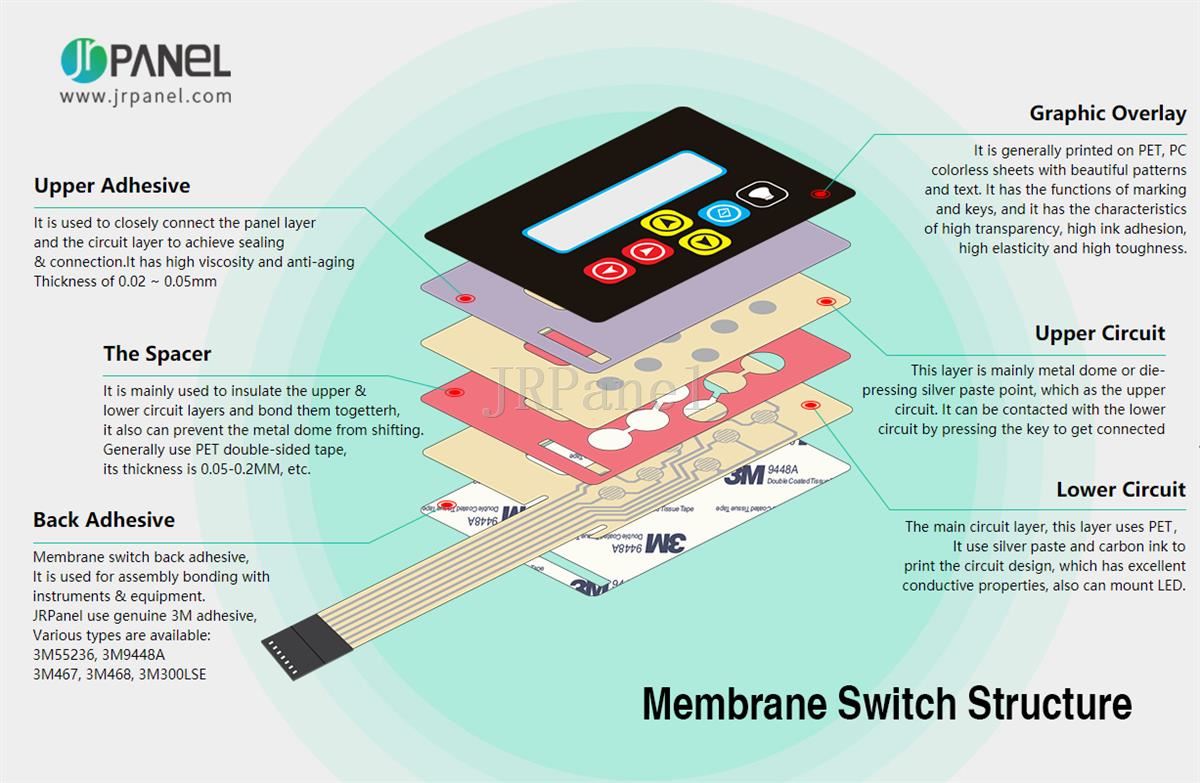Leading Benefits of Incorporating a Membrane Switch Into Your Digital Devices
Leading Benefits of Incorporating a Membrane Switch Into Your Digital Devices
Blog Article
Recognizing the Capability of Membrane Layer Switches Over for Interface Tools
The capability of membrane changes stands for a significant innovation in individual interface style, combining performance with visual adaptability. As sectors significantly focus on user experience, understanding the nuances of membrane switch technology becomes important.
What Are Membrane Switches?
Membrane buttons are cutting-edge interface gadgets that promote customer interaction with digital devices. These versatile parts contain several layers, consisting of a visuals overlay, spacer, and a printed circuit layer. The style enables a smooth integration into numerous digital tools, boosting both the aesthetic and practical elements of customer interfaces.
Membrane layer switches are typically employed in a broad variety of applications, from family home appliances to commercial equipment and medical gadgets. Their building and construction typically includes a thin profile, making them a suitable option for portable layouts. The responsive responses supplied by these buttons can be crafted to meet details customer preferences, guaranteeing effective interaction between the individual and the tool.
Longevity is one more significant advantage of membrane buttons, as they are immune to dust, moisture, and chemicals, which enhances their lifespan popular environments. Furthermore, these switches can be customized in terms of form, size, and visuals design, allowing for branding and user-specific features. Overall, membrane switches represent a sensible option for boosting individual experience in digital devices, combining capability with visual charm in an efficient manner.
Just How Membrane Switches Over Work
Operating on an uncomplicated principle, membrane layer switches utilize a layered construction to register individual input effectively. Each switch includes several layers, including a printed circuit layer, a spacer layer, and a top visuals layer, which are made to collaborate seamlessly. When an individual presses the top layer, it presses the spacer layer, bringing the conductive components of the circuit layer into call with each other.
This call develops a closed circuit, signifying the gadget to carry out a certain function. The layout permits numerous arrangements, including responsive comments, which can improve the user experience by providing a physical experience upon activation. The products used in membrane layer buttons frequently include versatile substrates, such as polyester or polycarbonate, which make sure toughness and strength against damage.

Secret Advantages of Membrane Layer Buttons

An additional substantial benefit is their compactness. Membrane layer buttons are slim and light-weight, which makes it possible for suppliers to save room in their gadgets without giving up capability. This attribute is particularly valuable in applications where weight and quantity are important factors to Check Out Your URL consider.
Additionally, membrane layer buttons are immune to dust, dampness, and chemicals, boosting their sturdiness. This durability expands their lifespan and lowers the requirement for frequent substitutes, leading to cost savings with time.
Moreover, the responsive responses provided by membrane layer buttons can be enhanced to boost individual interaction. They can consist of functions such as increased buttons or audible clicks, boosting use and individual experience.
Applications Throughout Industries
Customer interface tools using membrane switches are prevalent in a wide variety of sectors, showcasing their versatility and performance. Membrane Switch. In the medical market, membrane layer switches are important to devices such as diagnostic click over here now tools and client tracking systems, where their sturdiness and convenience of cleaning are critical for preserving hygiene criteria. In the automotive sector, these buttons are used in control panel controls and infotainment systems, providing a smooth and contemporary interface for customers.
In addition, the customer electronics sector advantages from membrane switches in appliances and handheld tools, where portable design and user-friendly user interfaces improve user experience. Industrial applications likewise leverage membrane layer changes for control panels in equipment and automation systems, stressing their toughness and resistance to severe environments.
In the aerospace and defense industries, membrane layer switches are made use of in cockpit controls and tools, where integrity and performance under extreme conditions are critical. Furthermore, the video gaming sector progressively integrates membrane layer switches in controllers and gallery makers, adding to an interesting customer experience. Generally, the flexibility of membrane switches over allows their prevalent usage throughout countless fields, emphasizing their relevance in modern-day interface design.
Future Trends in Membrane Layer Switch Technology

Furthermore, using innovative products, such as polycarbonate and polyester films, is anticipated to increase, giving boosted longevity and resistance to environmental stress factors. These materials add to the overall durability of membrane switches, making them ideal for harsher commercial applications.
Furthermore, the incorporation of wise technology, consisting of IoT connectivity, will enable membrane switches to interact with other tools and systems, facilitating a much more interactive customer experience. This fad aligns with the expanding demand for smart devices across various markets, from healthcare to consumer electronic devices.
Last but not least, personalization choices are prepared for to increase, enabling manufacturers to produce bespoke remedies customized to specific individual demands and preferences. These advancements will certainly place membrane layer buttons as crucial elements in the advancement of user interface technology.
Conclusion
To conclude, membrane layer switches stand for a pivotal improvement in user interface technology, offering a dependable and flexible remedy for varied electronic applications. Their layered construction promotes small design, while attributes such as responsive responses enhance user communication. The longevity against ecological aspects even more strengthens their energy throughout multiple sectors. As improvements in product scientific research and touch sensing technologies proceed, the functionality and applicability of membrane layer buttons are anticipated to increase, enhancing their value in modern-day electronic devices.
Report this page